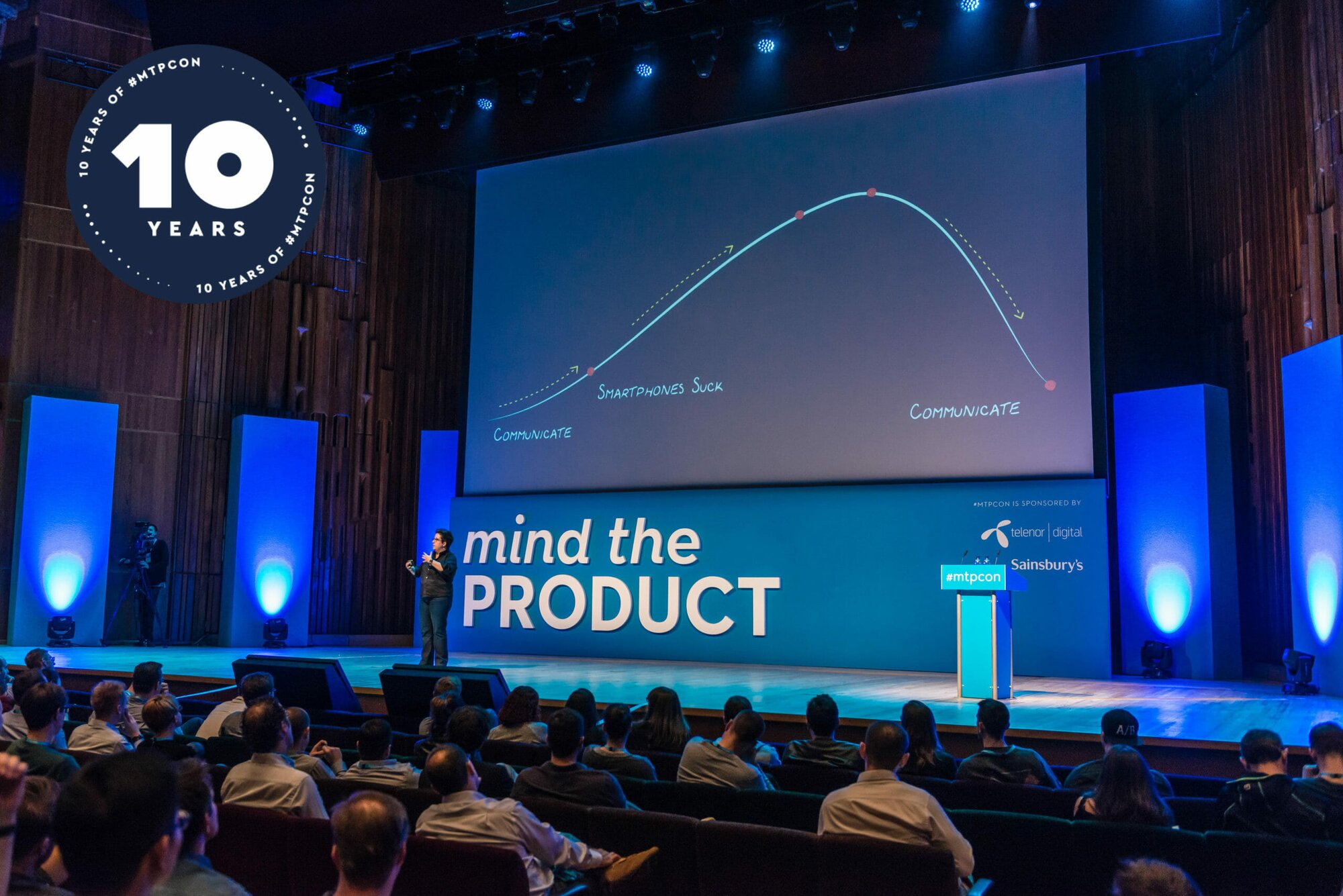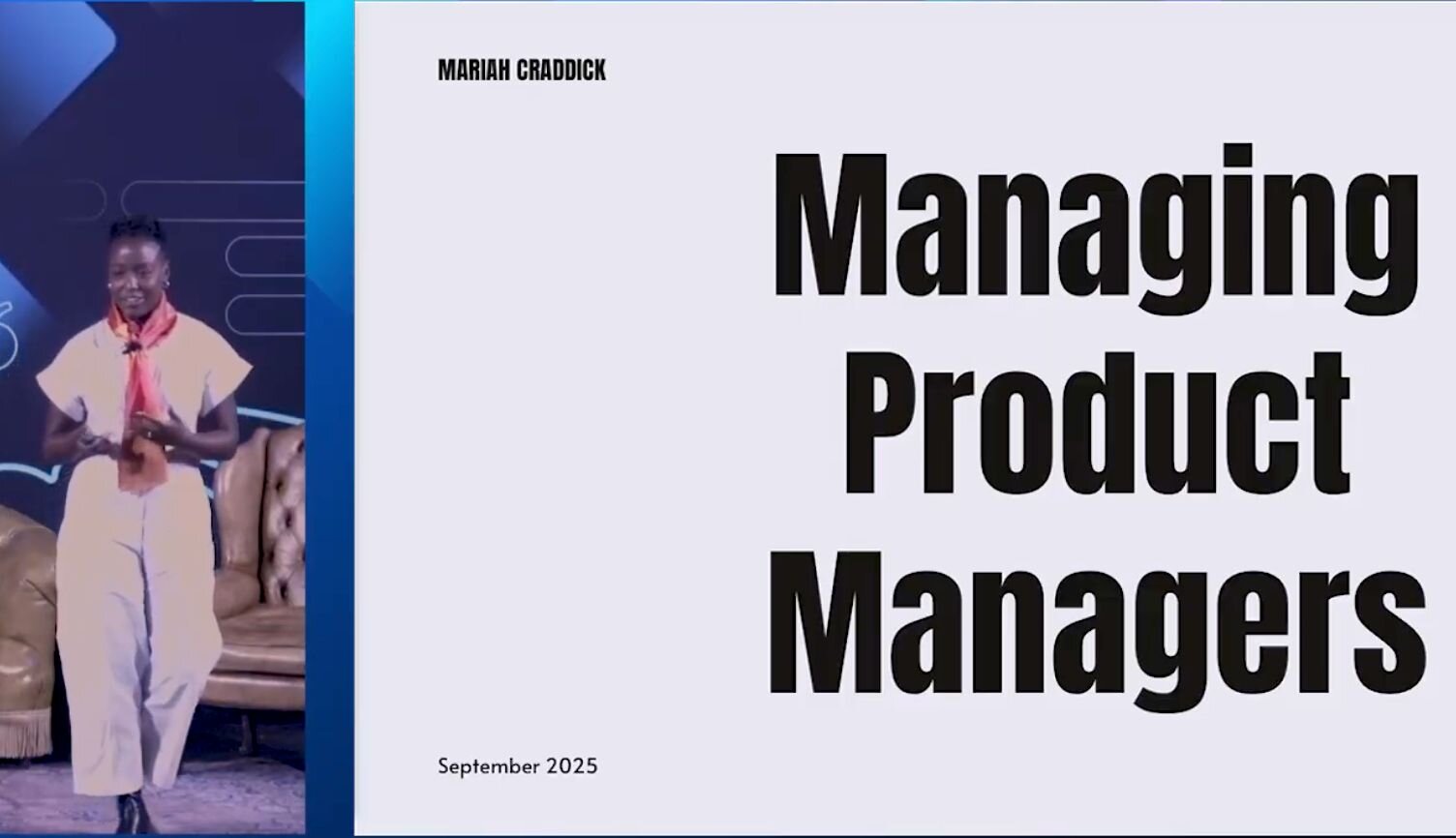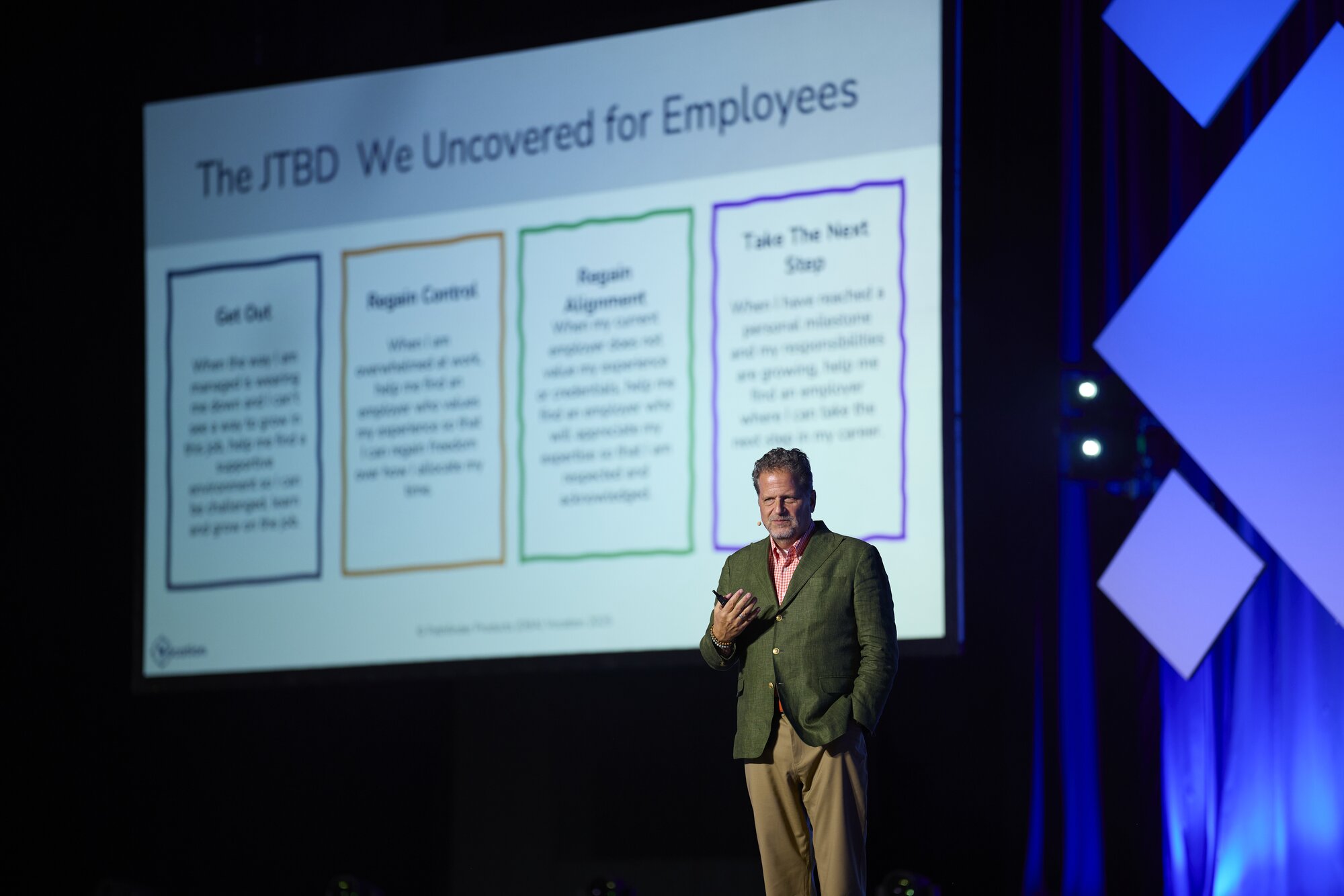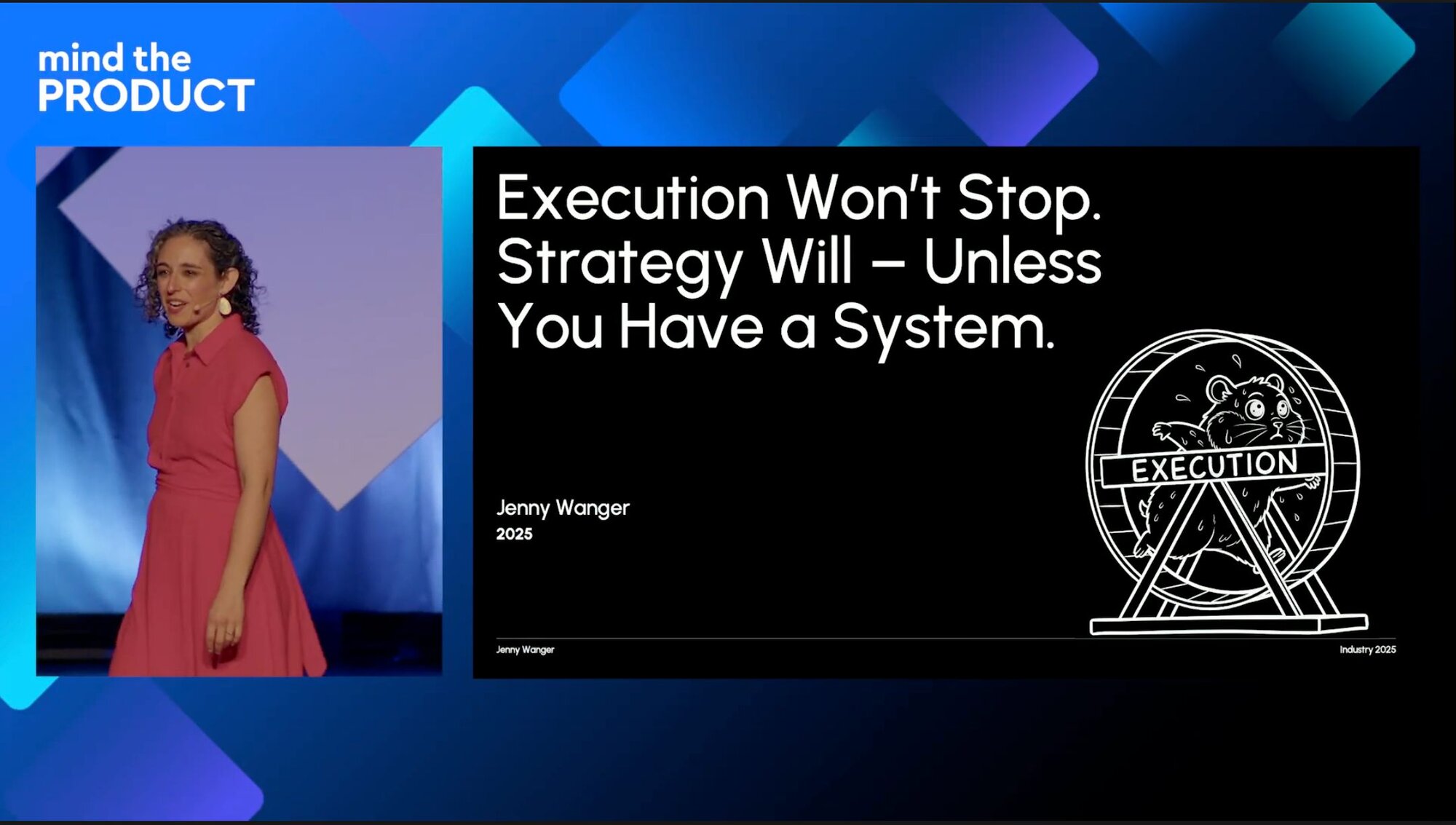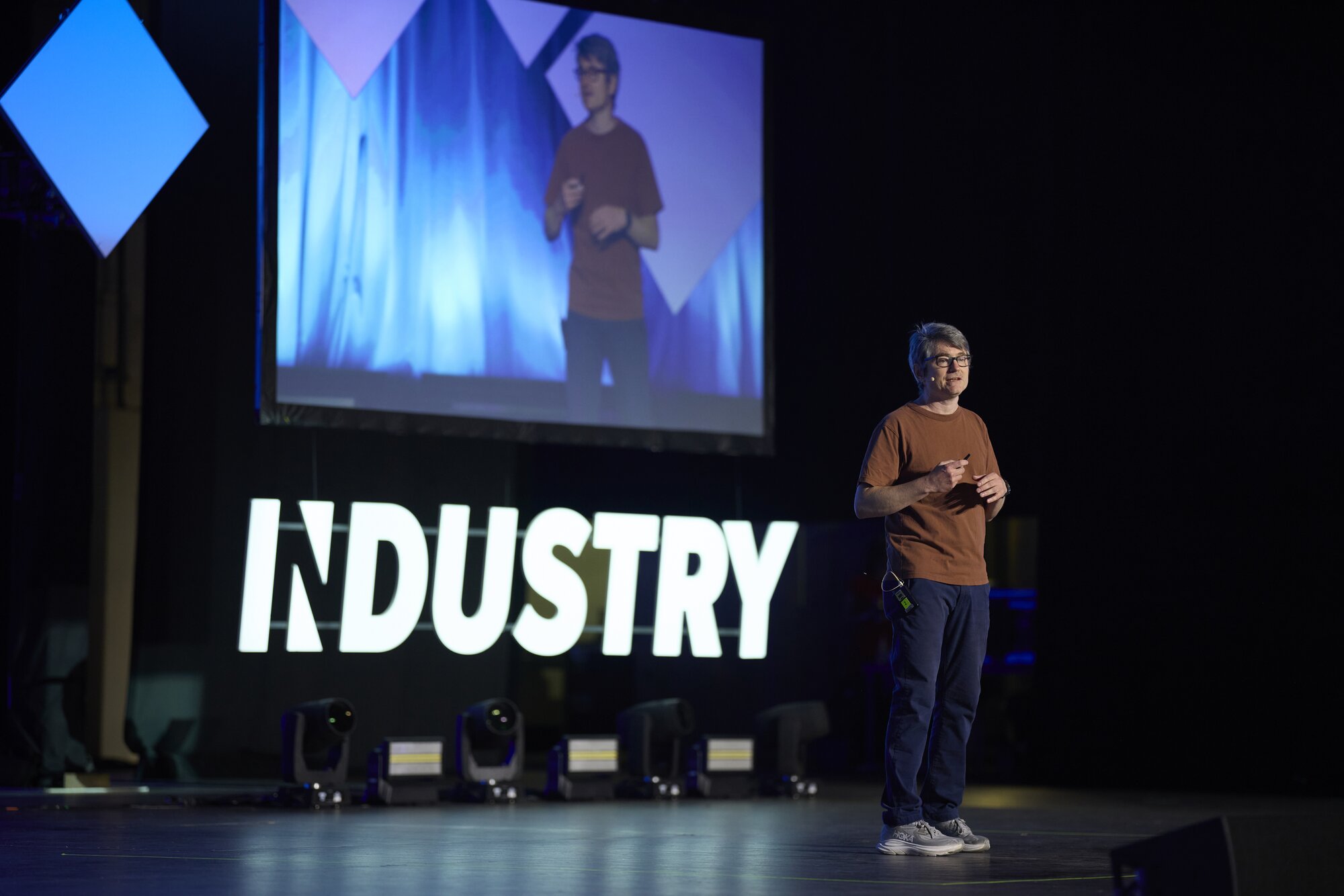This look at what we’ve learned from years past at #mtpcon London takes us back to 2016 and a talk from Donna Lichaw on the importance of storytelling in product management: Crafting products that engage.
Donna is a film-school graduate turned product specialist, and she uses her experience in film to develop and advocate a “story first” approach that she now writes about, speaks about and teaches to product managers all over the world.
She talks about how it is a fundamental tenet of film-making to tell a story and how this can be applied to product. Products have a lot in common with films, she says, and if you want to engage your audience you have to have a story at your foundation. “You can do this by accident or with meticulous care and intent by mapping the story out.”
Back to the future
Donna uses the plot from Back To The Future to explain how a story ideally should work. During the exposition you are introduced to the hero or main character who typically has a big goal they want to achieve. In Back To The Future Marty McFly wants a truck and a girlfriend and to be different from his family. He has Doc who is a friend with a time machine. The inciting incident or problem is when everything changes. In Back To The Future Libyans shoot Doc because he stole their Plutonium so Marty jumps in the time machine to try to right the situation.
This leads to rising action, where every scene has to be more interesting than the one that has gone before, until eventually you reach the moment of crisis: the point of no return when the hero is very close to solving the problem, and we all identify with the hero. The crisis is overcome by the climax or resolution.
After the climax comes the denouement, and the narrative should be wrapped up as quickly as possible. It’s important that the story doesn’t end on a high point. “It’s important for us as humans that we get closure, we need to know what happens next and we need things wrapped up and we feel calm and content that the episode came to an end,” says Donna.
Apply the narrative arc to products
You can use the same narrative arc to create products with your customers as heroes and allow them to use your product successfully, she says.
At the outset ask yourself:
- Who is your hero and what is their goal?
- What is their problem, why can’t they meet their goal?
- What is your product and market category, what problem will customers use your product to solve?
- What is the competition? This is where tension comes into play, says Lichaw, and it’s important to remember that competition always exists. There will always be a reason for people not to use your product.
- Remember that competition serves value and competitive advantage.
- What is the takeaway? What do you want people to experience and feel about your product?
- Finally, there must be the promise that the customer’s goal can be met.
Donna then illustrates this by using the narrative arc for the development and launch of the iPhone, showing how the story should weave through everything from unboxing the product to the user interface, and every key flow built needs to deliver on its promise in order to achieve long-term engagement.
She concludes: “If your product story is intact and you prioritise features and requirements based on supporting the story, then you get people who will love your brand. It also affects desirability – it’s more likely to make us want to do something, more likely to value and remember the experience and choose it again.”
#mtpcon London is back this October (13th & 14th) and celebrating its 10th anniversary! Join us for our tried and tested hybrid conference format, for two full days of product inspiration (plus a day of optional pre-conference workshops!). Find out more here.

